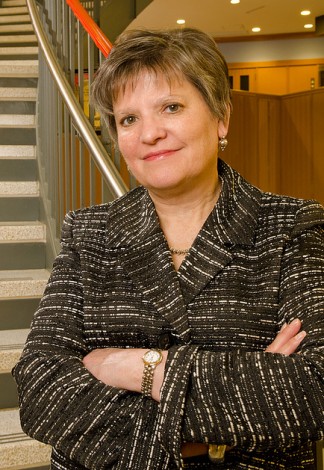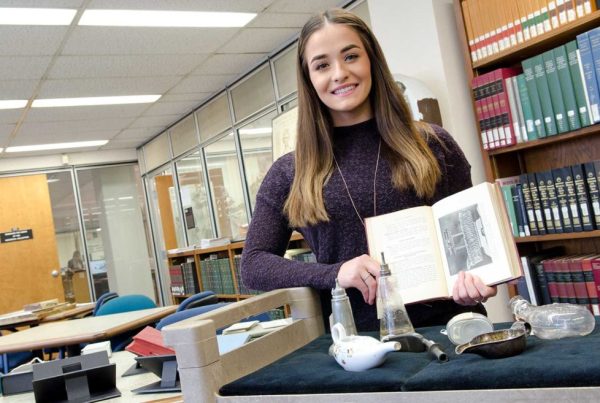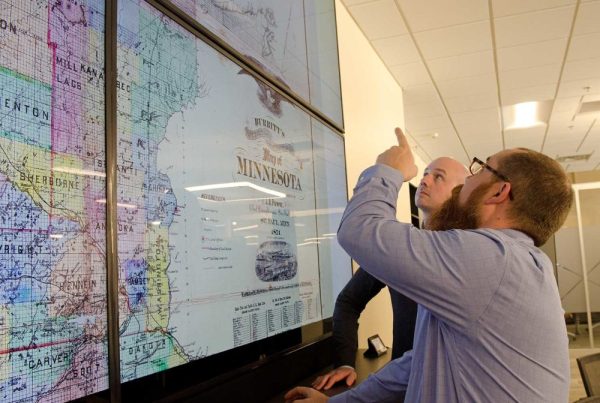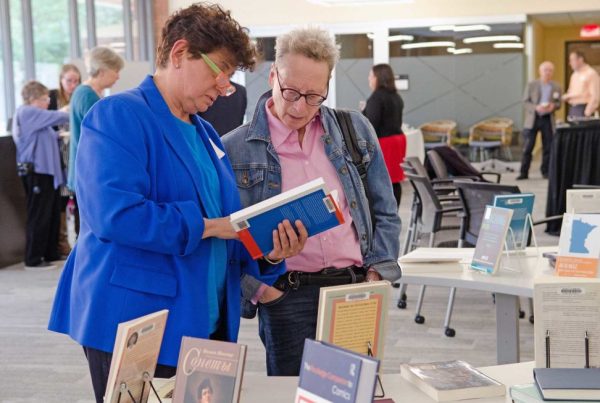 I recently attended my college reunion at a liberal arts college in the Midwest. In touring the library (where it was fun to see my photo included in a display of alumni librarians!), I was reminded of the many hours spent there, studying in my designated carrel. It was a place largely for solitary work, using the collections (all print), and getting help from librarians. While socializing happened in a separate, lounge area, generally we all respected the subdued culture of that building. But every now and then, I’d sneak in a cup of coffee — as refreshments of any kind were strictly prohibited.
I recently attended my college reunion at a liberal arts college in the Midwest. In touring the library (where it was fun to see my photo included in a display of alumni librarians!), I was reminded of the many hours spent there, studying in my designated carrel. It was a place largely for solitary work, using the collections (all print), and getting help from librarians. While socializing happened in a separate, lounge area, generally we all respected the subdued culture of that building. But every now and then, I’d sneak in a cup of coffee — as refreshments of any kind were strictly prohibited.
Scroll forward many decades and so much has changed in education, in student interests and behavior, and the ways in which teaching, research, and learning take place. We’ve seen a shift in education — from a focus on instruction, to a focus on learning. Contexts for learning are increasingly experiential, affording students more active engagement in problem solving and exploration. Technologies provide an array of new options for learning, often bringing together students and faculty from across disciplines to work together in groups.
These changes have challenged us to reimagine the work of libraries and to expand on our classic roles of providing collections and responding to inquiries from users. As more content moves to digital form, physical collections are still important, but our legacy print collections are seeing decreasing use. And as the collections have grown, they have consumed areas previously intended for users. Consequently, all research libraries, including the University of Minnesota, are housing lesser-used collections in environmentally controlled, high-density collection spaces. As a research library – the only one in Minnesota – we take seriously our responsibility to preserve these collections and to provide timely access for the campus, Minnesota residents, and scholars around the world.
This issue of continuum explores some of the new spaces in our libraries. The planning for the new Health Sciences Education Center — which will contain the Bio-Medical and Wangensteen libraries — will include services and spaces necessary to educate the next generation of health care providers. Big data, education through active learning and practice, and health care innovation require a more interactive library with spaces and technologies for new modes of learning, collaboration, and engagement with digital data. Imagine navigating the central nervous system or experiencing the layout of an operating room through virtual reality goggles!
The new Maxine Houghton Wallin Special Collections Research Center and the Wilson Research Collaboration Studio provide rich opportunities for experiential learning and scholarship. In the Wallin Center, individuals from campus or from around the globe can interact with our extraordinary special collections and archives — from the Bell Library’s 15th-century navigational maps to Sherlock Holmes’ manuscripts to Ralph Rapson’s architectural drawings.
The Wilson Studio, which opened last year, is constantly abuzz with students and faculty working in groups, attending workshops to learn more about research resources, and participating in a new type of Libraries service called Research Sprints.
The 21st-century research library is dynamic, engaging, and embraces both the print and digital worlds. It continues to offer opportunities for solitary study, but it also provides new spaces for active engagement with our rich collections and our expert librarians. The spaces reflect and support how individuals do their work today.
And — except for our special collections spaces — you no longer have to sneak in that coffee!
—Wendy Pradt Lougee
University Librarian and Dean of Libraries
McKnight Presidential Professor




